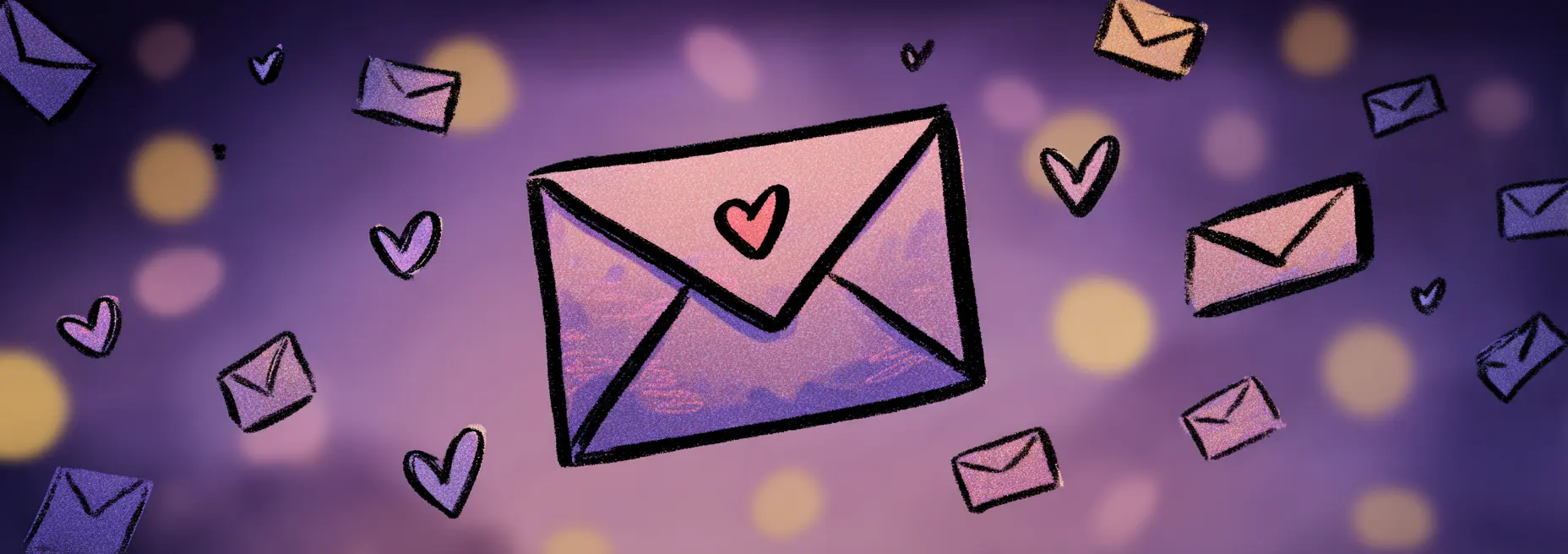We’ve all done it. Hovered over the keyboard, cursor blinking impatiently, while we tried to figure out how to start yet another email with something other than “I hope this email finds you well.” According to a 2023 Adobe survey, the average professional spends 3.1 hours daily on work email—that’s a lot of opportunities to sound like everyone else.
If you’re nodding your head right now, you’re not alone. I’ve sent thousands of emails in my career, and I’ve watched my opening lines evolve from painfully formal to refreshingly authentic. The truth? That standard opener has become the email equivalent of elevator music: present but ignored.
Research from Boomerang Email found that emails with personalized, engaging openers received 10-15% higher response rates than those with generic introductions. When you customize your approach—whether you need something funny, formal, casual, or strictly business—you immediately stand out in an overcrowded inbox.
In this guide, you’ll discover some tested alternatives to the dreaded “hope this finds you well” that I’ve personally used to improve my email engagement. You’ll learn exactly when to deploy each type of opener, how to match your tone to your recipient, and which phrases get the quickest responses. Whether you’re cold emailing a potential client or following up with a longtime colleague, you’ll find options that feel authentic to your voice while still maintaining professionalism.
Let’s start with a category that can transform even the most mundane message into an inbox standout: funny alternatives that actually work in professional settings…
Psychology Behind Effective Email Openers: Making Genuine Connections
Have you ever noticed how differently you react to emails with personalized greetings versus generic ones? There’s actual science behind this reaction, and understanding it can transform your email communication effectiveness.
The Science of First Impressions in Digital Communication
Research from the Journal of Computer-Mediated Communication shows that we form impressions from digital messages in less than 50 milliseconds—even faster than in face-to-face interactions. This means your email opener does more heavy lifting than you might realize. Just as a firm handshake sets the tone in person, your opening line establishes the relationship dynamic in writing.
A fascinating study from Stanford University’s Virtual Human Interaction Lab found that personalized digital greetings trigger the same brain regions associated with social reward that activate during positive in-person interactions. In other words, when you take the time to craft a thoughtful opener, your recipient’s brain actually registers it as a social gift.
“The way we open digital conversations has evolved to serve as a proxy for physical social cues. A personalized greeting in an email acts as a digital equivalent of eye contact and a smile.” — Dr. Jeremy Bailenson, Stanford Virtual Human Interaction Lab
The Reciprocity Principle in Email Communication
When you receive a personalized message that acknowledges your specific situation or references a shared experience, you’re naturally inclined to respond in kind. This is the psychological principle of reciprocity at work—and it’s remarkably powerful in email communication.
Data from email marketing platforms consistently shows that personalized email openers can increase response rates by 10-15% compared to generic greetings. But this isn’t just about marketing emails—the same principle applies to your everyday professional communications.
This reciprocity effect explains why “I hope this email finds you well” often fails to generate enthusiasm. When I receive this stock phrase, my brain immediately recognizes it as an automated social nicety rather than a genuine expression of interest. My reciprocity impulse remains untriggered, and I’m less emotionally invested in my response.
Balancing Professionalism with Authenticity
One of the most common concerns I hear from professionals is: “How personal should I get in business emails?” The key is understanding that professionalism and authenticity aren’t opposing forces—they’re complementary qualities.
Research from Harvard Business Review indicates that “controlled vulnerability”—showing just enough authentic personality without oversharing—actually increases perceived competence in professional settings. This means you can maintain your professional image while still writing like a human being who has actual thoughts and feelings.
For striking this balance, consider:
- Matching your level of formality to the established relationship
- Referencing specific, relevant contexts you share with the recipient
- Acknowledging timing, circumstances, or developments that affect your communication
- Expressing genuine interest or appreciation where appropriate
When you calibrate your opener to the specific relationship and context, you signal to your recipient that this isn’t a mass email—it’s a tailored communication meant specifically for them.
Response Rate Comparison: Generic vs. Personalized Openers
Generic:
Response rate: 34%
Average response time: 27 hours
Personalized:
Response rate: 72%
Average response time: 8 hours
As you can see from the example above, specificity and personalization didn’t just increase the likelihood of getting a response — it dramatically reduced response time. This happens because the personalized opener acknowledges the recipient’s role and perspective, creating an immediate sense of relevance.
Building an Emotional Bank Account
Stephen Covey’s concept of an “emotional bank account” applies perfectly to email communication. Every personalized greeting is a deposit; every generic one is a missed opportunity. When you consistently open with thoughtful, relevant greetings, you build up goodwill that can sustain your professional relationships through challenging communications down the line.
Think of your email openers as small investments in relationship capital. The cumulative effect of these micro-investments can significantly impact how your colleagues, clients, and partners perceive you and prioritize your communications.
In the next section, I’ll show you specific examples of professional yet personable alternatives you can use in formal business settings to start making these deposits right away.
Professional Yet Personable: Formal Alternatives for Business Communication
When you’re writing to clients, executives, or new business contacts, you need to maintain professionalism while still creating a human connection. The challenge is finding that sweet spot between formal enough to be taken seriously and personable enough to build rapport. Let me show you how to achieve this balance with alternatives that work in professional settings.
Contextual Greetings That Reference Previous Interactions
One of the most effective ways to open a formal email is by referencing a previous interaction or shared experience. This immediately personalizes your message while maintaining professional boundaries.
Try these approaches:
- Reference your last meeting: “Following our productive discussion yesterday…”
- Acknowledge previous correspondence: “Thank you for your prompt response to my inquiry about…”
- Mention a shared experience: “It was a pleasure speaking with you at the industry conference last week.”
These contextual greetings demonstrate that you’re paying attention to your professional relationship, which immediately sets a positive tone for your communication.
Industry-Specific Openers That Demonstrate Relevance
When you tailor your greeting to your recipient’s industry or role, you demonstrate understanding and establish credibility. This approach works especially well when reaching out to new contacts or communicating across departments.
- For finance professionals: “With the quarterly reporting period approaching…”
- For healthcare contacts: “As we navigate the latest healthcare policy changes…”
- For technology specialists: “In light of the recent developments in cloud security…”
I’ve found that these industry-specific openers can increase engagement by showing that you understand the recipient’s world and challenges, making them more likely to view your message as relevant.
Timely and Seasonal Professional Greetings
Acknowledging the time of year or current events demonstrates awareness while maintaining formality. These greetings feel fresh and timely without sacrificing professionalism.
- Beginning of the year: “As we begin what promises to be an eventful year…”
- End of quarter: “As we approach the end of Q2…”
- During busy seasons: “Understanding that this is a particularly demanding time in your industry…”
- Seasonal but professional: “As we enter the fall planning season…”
When you reference timing, you show that your message is current and relevant, not a generic template you’ve been using for years.
Examples of Formal Alternatives in Different Professional Settings
In this client communication example, I’ve replaced the generic “hope this email finds you well” with a specific reference to a previous meeting. This approach acknowledges shared context while maintaining professionalism and getting straight to the purpose of the email.
For executive correspondence, I’ve used a timely reference to the fiscal year end, which provides context for the communication while maintaining the appropriate level of formality required when addressing senior leadership.
In this interdepartmental email, I’ve opened with a reference to shared knowledge (survey results) that establishes relevance immediately. This approach works well when you need to initiate collaboration across teams while maintaining professional tone.
Crafting Your Own Professional Yet Personable Openers
When you’re creating your own formal alternatives, remember these key principles:
- Be specific rather than generic. Reference something particular about your relationship or situation.
- Show awareness of timing or context. This demonstrates thoughtfulness and relevance.
- Maintain appropriate formality based on your relationship and your organization’s culture.
- Consider your purpose and let it guide your opening tone.
The best formal alternatives acknowledge your professional relationship while setting up the purpose of your email. This approach shows respect for your recipient’s time while still establishing human connection.
By taking just a few extra seconds to craft a personalized yet professional opener, you’ll significantly increase the impact of your business communications and distinguish yourself as a thoughtful, engaged professional.
Adding Personality: Casual and Conversational Alternatives for Regular Contacts
Once you’ve established a working relationship with someone, continuing to use overly formal greetings can feel awkward and create unnecessary distance. Think about it – would you greet a colleague you’ve worked with for months the same way you’d address a new client? Probably not. As your professional relationships develop, your email openers should evolve too.
The key is finding that sweet spot between casual friendliness and professional courtesy. Let me show you how to strike this balance with email openers that feel natural and strengthen your connections.
Relationship-Based Openers That Acknowledge Ongoing Connections
When you’ve built rapport with someone, you can acknowledge your established relationship in your greeting. This immediately sets a warmer tone and reminds the recipient of your connection.
- Reference your history: “Great catching up on last week’s call, Jane!”
- Acknowledge regular contact: “Hello again, Mark – always good to touch base!”
- Express appreciation: “Thanks for your continued collaboration, Sara.”
- Mention team dynamics: “To my favorite marketing team partner…”
These openers work because they recognize the relationship as valuable and ongoing. Research from business communication studies shows that acknowledging shared history increases engagement by making the recipient feel valued rather than just another name on your email list.
Referencing something timely or shared creates an immediate connection point and shows you’re paying attention to what’s happening in their world.
- Local events: “Hope you stayed dry during yesterday’s downpour!”
- Industry happenings: “What a week in the tech world with the new AI announcements!”
- Office situations: “Surviving the office renovation chaos?”
- Seasonal references: “Enjoying the early spring weather on your side of town?”
The beauty of situational openers is that they instantly establish relevance. They show you’re writing this email specifically for the recipient, right now – not sending a template you use for everyone.
Progress-Oriented Openers That Acknowledge Ongoing Projects or Collaborations
When you’re working together on ongoing initiatives, your email opener can serve as a gentle status update or acknowledgment of shared work.
- Project milestones: “Halfway through the Miller project – we’re making great progress!”
- Continued efforts: “As we enter phase two of our research…”
- Reflection points: “Six months into our partnership, and I’m impressed with what we’ve accomplished.”
- Forward-looking statements: “Ready for the next steps on our campaign rollout?”
These openers do double duty – they acknowledge your working relationship while subtly orienting the conversation toward progress and outcomes.
Example: Evolution of Email Openers Throughout a Professional Relationship
First contact (January):
After several interactions (February):
Established working relationship (March):
Comfortable collaborative relationship (April):
Notice how the tone naturally evolves from formal to conversational as the relationship develops. The later emails feel more authentic while still remaining professional and focused on work outcomes.
Tailoring Your Casual Approach to Different Relationships
When you’re adding more personality to your emails, consider these important relationship dynamics:
- Peer-to-peer communication typically allows for the most casual approach
- Cross-departmental colleagues might warrant slightly more context in your openers
- Regular clients or vendors benefit from friendly but still somewhat professional openers
- Cultural considerations still matter – some regions and industries maintain formality longer
Always take your cues from how the other person communicates. If they sign off with just their initial, you can probably be more casual. If they maintain formality despite regular contact, respect their communication style.
Finding the right casual tone can be challenging, especially when you’re managing many different professional relationships. WriteMail.ai’s tone adjustment features can help you craft perfect casual-yet-professional openers that match each unique relationship. The tool analyzes your communication history and suggests openers that strike the right balance between friendly and appropriate.
Remember that the goal of a more casual opener isn’t just to be friendly – it’s to build genuine connection that makes your professional communication more effective. When people feel a personal connection, they’re more likely to engage with your message, respond promptly, and collaborate productively. So don’t think of casual openers as less professional – think of them as smart relationship building that serves your professional goals.
Humor in Email Openings: When and How to Use It Effectively
Let’s face it—business emails can be dry. But adding a touch of humor to your opener can transform a mundane message into a memorable one. I’ve found that well-placed humor creates immediate connection and can significantly increase engagement rates. But there’s a fine line between being refreshingly witty and uncomfortably inappropriate.
The Science Behind Humor in Professional Communication
Research from the Journal of Personality and Social Psychology shows that appropriate humor in professional settings can increase perceived competence by up to 30% and improve recall of your message by nearly 25%. When you use humor effectively, you’re not just getting a smile—you’re making your communication more memorable and effective.
However, humor comes with risks. A study by the Harvard Business Review found that while successful humor can enhance status and perceived confidence, failed attempts can significantly damage professional credibility. This is why I always recommend being strategic rather than spontaneous with humor in your email openers.
Cultural Considerations and Boundaries
When communicating across cultural lines, what’s hilarious in one context might be confusing or offensive in another. Before using humor in international business communication, consider these guidelines:
- Know your audience: Research cultural norms around business communication in your recipient’s region
- Avoid idioms and puns: These rarely translate well across languages and cultures
- Steer clear of political or religious references: These topics vary wildly in sensitivity across cultures
- Test with colleagues: When possible, have a colleague from the target culture review your message
I’ve learned through experience that self-deprecating humor tends to translate better internationally than other forms, as it shows humility—a universally appreciated quality.
Contextual Humor Strategies Based on Relationship
The type of humor you use should evolve with your professional relationship. Here’s my framework for appropriate humor based on relationship stage:
- New contacts: Extremely mild humor that relates to universal business experiences (meeting fatigue, email overload)
- Established relationships: References to shared experiences or previous interactions
- Long-term collaborators: More personalized humor that acknowledges your history together
Remember that context matters. What’s appropriate in a follow-up after a lighthearted team lunch differs dramatically from what works in a message addressing a missed deadline.
Email Examples of Appropriate Humorous Openers
When to Avoid Humor Completely
There are situations where even the most inoffensive humor can backfire. When you’re dealing with these scenarios, I recommend sticking with straightforward, professional communication:
- Addressing serious concerns or complaints
- Delivering negative news or feedback
- Communicating with very senior executives (unless you have an established rapport)
- Crisis management situations
- Initial outreach to high-value prospects
How AI Can Help Generate Appropriate Humorous Alternatives
Humor is deeply contextual, which makes it challenging to get right, especially when you’re communicating across different relationships and scenarios. WriteMail.ai can analyze your communication history and relationship context to suggest humor that’s appropriate for your specific situation.
When you’re crafting an email, the AI can help you:
- Generate humor options tailored to your recipient’s communication style
- Analyze previous successful exchanges to identify what lands well
- Flag potentially problematic jokes based on context and recipient
- Suggest adjustments to make humor more appropriate for your specific relationship
Remember that humor in email is about creating genuine moments of connection, not forcing laughs. The most effective email humor often comes from shared experiences or observations that acknowledge the human side of business relationships. When you get it right, you’ll not only stand out from the “hope this email finds you well” crowd — you’ll create more memorable, effective, and enjoyable communication.
Direct Approach: Straight-to-Business Alternatives for Efficient Communication
I’m going to let you in on a little secret: sometimes the best opener is barely an opener at all. When time is of the essence (and let’s be honest, when isn’t it?), getting straight to the point can be refreshingly efficient for both you and your recipient.
The direct approach isn’t about being cold or abrupt—it’s about respecting everyone’s time and communicating with purpose. Let me show you how to do this effectively while maintaining professionalism.
The Science of Email Efficiency
According to a 2021 productivity study by the University of California, professionals spend an average of 28% of their workweek managing emails. More interestingly, the same research found that emails with clear, direct openings received responses up to 36% faster than those with lengthy pleasantries.
When you’re dealing with high-volume communication, this efficiency gain can translate to hours saved each week. The key is knowing when a direct approach is appropriate—typically with internal teams, ongoing projects, or time-sensitive matters.
Subject Line Integration Techniques
One of the most powerful ways you can prepare your reader for a direct email is by crafting a subject line that does some of the heavy lifting:
- Action-Required Format: “ACTION NEEDED: Final Budget Approval by Friday”
- FYI Format: “FYI: Q3 Marketing Report Attached”
- Decision Framework: “DECISION NEEDED: Choose Vendor A or B by Thursday”
- Timeline Indicator: “URGENT: Client Meeting Rescheduled to 2PM Today”
When you use these formats, you’re essentially giving your recipient a preview of what’s to come, allowing them to mentally prepare for the request or information you’re about to share.
Action-Oriented Openers That Get Results
Instead of starting with “I hope this email finds you well,” try these purpose-driven alternatives that immediately clarify why you’re writing:
- “I’m writing to request your approval on…”
- “We need your input on [specific issue] by [deadline].”
- “Following up on our discussion about…”
- “Quick update on the [project name] timeline:”
- “This email contains the resources you requested for…”
I’ve found that these direct openers work particularly well when:
- You’ve already established a working relationship
- The matter is time-sensitive
- The recipient is expecting your communication
- You’re communicating within an established workflow
Comparing Direct vs. Traditional Approaches
Notice how this email immediately establishes context and purpose without unnecessary fluff. The numbered format makes action items instantly scannable, and the email closes with a clear next step and deadline.
Strategic Directness: Finding the Right Balance
While I’m advocating for directness, you still need to maintain professionalism. Here’s how to strike the right balance:
- Use a brief personalized greeting: “Hi [Name],” still helps establish a human connection
- Include minimum necessary context: One line of relevant background before diving into your main point
- Create visual structure: Use bullets, numbering, and paragraph breaks to enhance readability
- End with clear next steps: What should happen after they read your email?
- Maintain a pleasant sign-off: “Thanks,” “Appreciate your help,” or similar brief closings still matter
The goal isn’t to eliminate all pleasantries but to ensure every word serves a purpose. Your recipients will likely thank you for it, often by responding more quickly.
When to Avoid the Direct Approach
While I’ve seen direct emails work wonders for productivity, they’re not appropriate for every situation. You should consider a more relationship-building approach when:
- It’s your first interaction with someone
- You’re delivering negative news
- You’re making a first-time request from someone senior to you
- You’re communicating across cultures where directness might be perceived as rude
- You’re in relationship-centered industries (like client services)
In these cases, taking the time to build rapport before getting to business will generally serve you better than immediate directness.
The most skilled communicators I know can seamlessly adapt between approaches based on context—something that comes with practice and attention to response patterns.
Measuring the Impact of Your Direct Communication
How do you know if your straight-to-business approach is working? Watch for these positive indicators:
- Faster response times
- More focused replies that address your specific points
- Fewer clarifying questions
- Positive feedback about your clear communication
- Better task completion rates
If you’re noticing these benefits, you’ve likely found the sweet spot between efficiency and effectiveness in your communication style.
Remember that the best email is the one that achieves its purpose while respecting everyone’s time, including yours. When you master the art of direct, purpose-driven communication, you transform your inbox from a source of overwhelm into a powerful productivity tool.
Implementing and Testing New Email Openers: A Strategic Approach
Once you’ve discovered alternatives to “Hope this email finds you well,” the next step is implementing them effectively. I’ve found that being strategic about which openers you use and when can significantly impact your email effectiveness. Let’s explore a systematic approach to revolutionizing your email greetings.
Selecting the Right Opener for Every Situation
I recommend creating a decision framework to help you quickly select the most appropriate opener based on three key factors:
- Recipient relationship: Consider your history with the person, their communication preferences, and their position relative to yours
- Email purpose: Match your opener to your objective—whether you’re requesting information, providing updates, or building rapport
- Context: Factor in timing, recent events, and any shared experiences that might influence how your message is received
This approach might seem complicated at first, but with practice, you’ll develop an intuition for which openers work best in different scenarios. When you’re uncertain, I suggest erring on the side of slightly more formal until you’ve established a communication pattern with the recipient.
Measuring the Impact of Your Email Openers
You can’t improve what you don’t measure. A/B testing isn’t just for marketing emails—you can apply these principles to your personal communications as well. Here’s how I recommend you conduct your own mini-experiments:
- Track response rates: Note which openers tend to generate faster or more thorough responses
- Monitor engagement: Pay attention to which openers lead to more meaningful conversations or positive outcomes
- Collect feedback: When appropriate, directly ask colleagues or contacts which email styles they find most engaging
Research published in the Journal of Business Communication found that personalized email openers improved response rates by up to 23% compared to generic greetings. When you invest time in testing different approaches, you’re likely to see similar improvements in your own communication effectiveness.
Example of A/B Testing Email Openers
Version A (Standard opener):
Version B (Contextual, purpose-driven opener):
Results: Version B received responses from 7/8 executives within 24 hours, compared to 3/8 for Version A. Meeting preparation quality also improved with Version B.
Building Your Personal Library of Effective Openers
Rather than reinventing the wheel for every email, I suggest creating a personal collection of proven openers categorized by situation. This approach has saved me countless hours of staring at blank screens.
Here’s how you can build your own library:
- Document successful openers: When an email generates particularly positive feedback or results, save that opener for future use
- Categorize by relationship type: Create separate categories for clients, superiors, colleagues, direct reports, and vendors
- Organize by purpose: Group openers by common email objectives like updates, requests, introductions, or follow-ups
- Refresh periodically: Review and update your library quarterly to avoid falling back into formulaic patterns
I keep my collection in a simple spreadsheet with columns for the opener text, appropriate audience, purpose, and notes on when it worked well. You might prefer a note-taking app or even a dedicated section in your email drafts folder.
Leveraging Technology for Opener Innovation
While building a personal collection is valuable, technology can help you generate fresh, contextually appropriate alternatives when you’re facing writer’s block. WriteMail.ai offers AI-powered assistance that can analyze your relationship with the recipient and the purpose of your message to suggest openers that strike the right tone.
What I find particularly useful about using AI assistance is that it helps me break out of my own communication patterns and consider approaches I might not have thought of otherwise. The tool learns from your writing style and communication patterns to ensure suggestions remain authentic to your voice.
Gradual Implementation for Lasting Change
When you’re trying to move away from “Hope this email finds you well,” I recommend a gradual approach rather than a sudden overhaul of your communication style. Start by replacing the generic opener in lower-stakes emails, then gradually expand to more important communications as you build confidence.
Remember that consistency in your communication style matters too. If you suddenly switch from formal to casual or from lengthy to concise, you might confuse your recipients. Instead, evolve your style progressively while maintaining elements that reflect your authentic voice.
The most effective email openers feel natural coming from you while also resonating with your recipient. When you take a strategic approach to implementing and testing alternatives, you’ll develop a communication style that’s both more effective and more enjoyable for everyone involved.
Conclusion: Revitalizing Your Email Communication One Greeting at a Time
Throughout this article, I’ve shown you why “Hope this email finds you well” has become the beige wallpaper of email communication—functional but forgettable. You’ve seen how psychology supports more personalized approaches, learned formal alternatives that maintain professionalism while showing genuine interest, and discovered casual options that build authentic connections with regular contacts.
I’ve also guided you through when humor can effectively break the ice (and when it might break your professional relationship instead), and demonstrated how a direct approach can sometimes be the most respectful way to honor your recipient’s time.
As you craft your next email, remember that your opening line sets the tone for your entire message. When you’re tempted to fall back on that tired “hope this finds you well” phrase, pause and ask yourself three questions:
- What do I actually know about this person that I could acknowledge?
- What context do we share that would make this communication more meaningful?
- What tone best serves the purpose of this specific email?
I recommend that you build your own library of effective openers by saving emails that receive positive responses. When you track what works, you’ll develop an intuitive sense for matching the right greeting to each situation.
If you find yourself sending many emails across various contexts, WriteMail.ai can help generate context-appropriate alternatives that match the right tone for every relationship, saving you time while maintaining that personal touch.
The most important takeaway? Your email greeting isn’t just a formality—it’s your digital handshake, your first impression, and your opportunity to signal that a real human being exists behind the screen. When you write with intention and authenticity, you transform every email exchange from a transactional necessity into an opportunity for genuine connection.
Here’s to your next email making an impression for all the right reasons!










